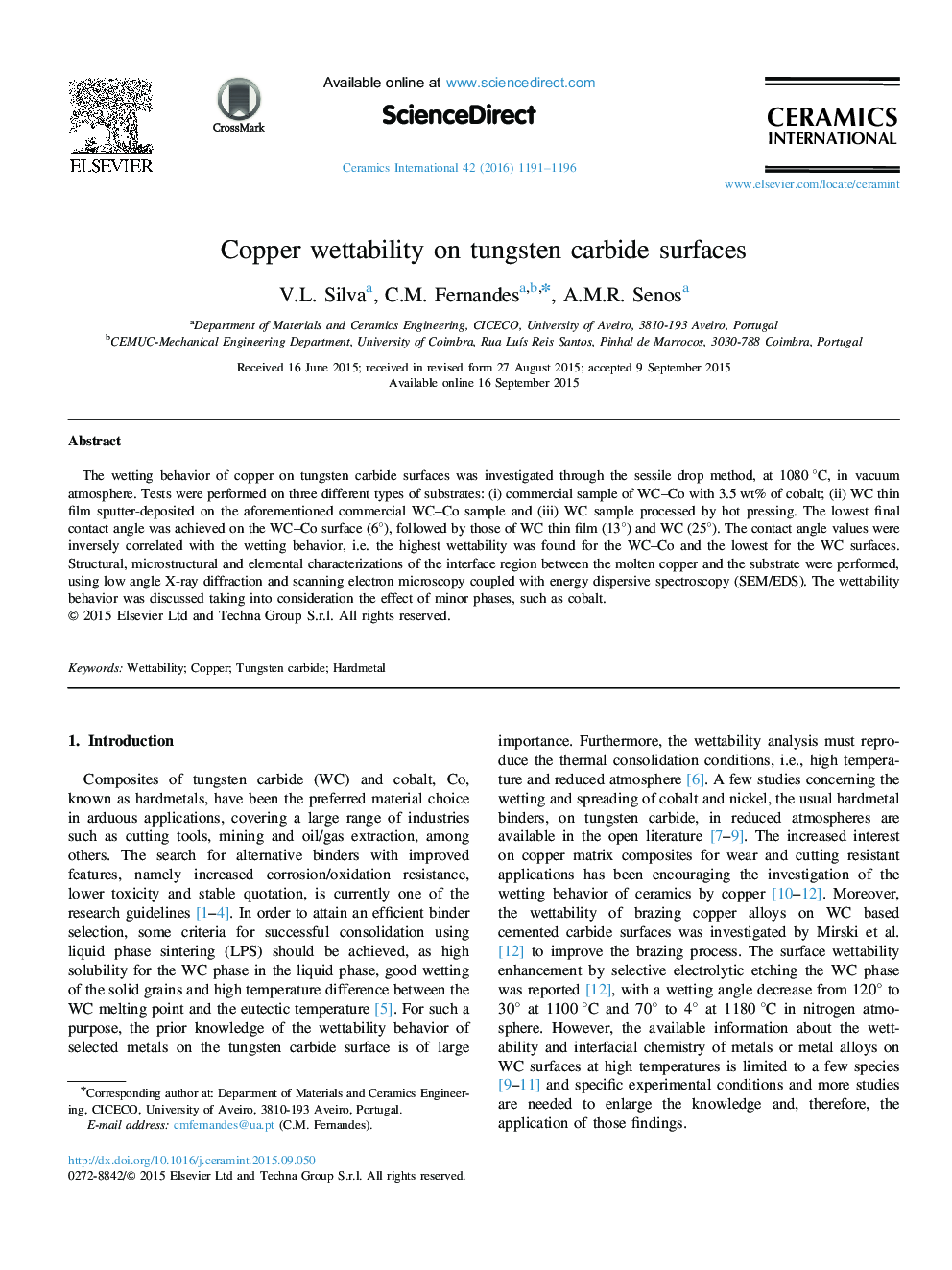| Article ID | Journal | Published Year | Pages | File Type |
|---|---|---|---|---|
| 10624449 | Ceramics International | 2016 | 6 Pages |
Abstract
The wetting behavior of copper on tungsten carbide surfaces was investigated through the sessile drop method, at 1080 °C, in vacuum atmosphere. Tests were performed on three different types of substrates: (i) commercial sample of WC-Co with 3.5 wt% of cobalt; (ii) WC thin film sputter-deposited on the aforementioned commercial WC-Co sample and (iii) WC sample processed by hot pressing. The lowest final contact angle was achieved on the WC-Co surface (6°), followed by those of WC thin film (13°) and WC (25°). The contact angle values were inversely correlated with the wetting behavior, i.e. the highest wettability was found for the WC-Co and the lowest for the WC surfaces. Structural, microstructural and elemental characterizations of the interface region between the molten copper and the substrate were performed, using low angle X-ray diffraction and scanning electron microscopy coupled with energy dispersive spectroscopy (SEM/EDS). The wettability behavior was discussed taking into consideration the effect of minor phases, such as cobalt.
Related Topics
Physical Sciences and Engineering
Materials Science
Ceramics and Composites
Authors
V.L. Silva, C.M. Fernandes, A.M.R. Senos,
